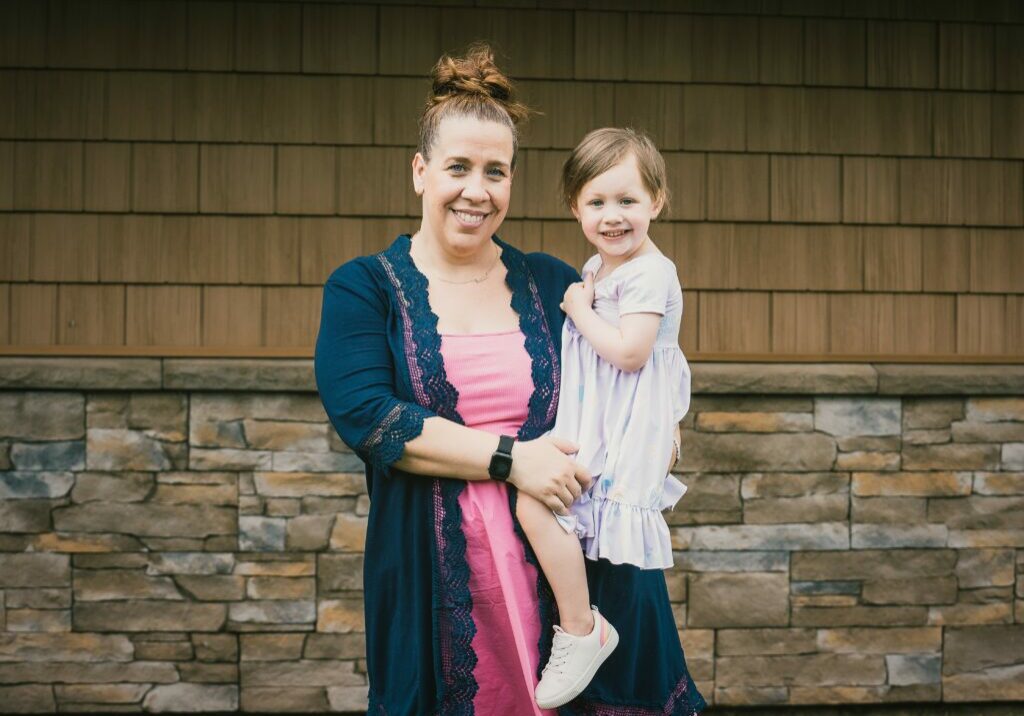By Gina Anthony, Wayne Education Association
One day my daughter was an energetic two-year old going to preschool and excited for a visit from the Easter bunny. The next day, she was one of the 47 children diagnosed with pediatric cancer each day in the United States. My family was thrust into the childhood cancer community instantly. Without even time to process what was happening, my daughter had her kidney and tumor removed, and a port placed for chemotherapy. Chemo started two weeks after surgery and lasted for five months. We basically spent an entire spring and summer unexpectedly fighting kidney cancer.
Most people thankfully, don’t have much experience with pediatric cancer. This forced me to look online and to the cancer community for help. We have gotten assistance from many organizations willing to send care packages or t-shirts or just about anything to make my daughter feel better during treatment. There also was an educational liaison at the hospital that was in touch with Georgia’s school. They were able to make all of the accommodations necessary for her to return post treatment. She was monitored closely by the nutritionist at the hospital to make sure she didn’t lose weight and was getting nutrients. She received play therapy, music therapy, therapy dog visits and lots of activities with the child life specialist at the hospital. They made treatment so enjoyable, that my now three-year old misses it and wants to go back. If that isn’t proof that these professionals are good at their jobs, then I don’t know what is.
My daughter is 11 months in remission now. She is expected to have a 98% chance of remaining cancer free. Many people wonder why I am still in the thick of the childhood cancer community even though our immediate journey is over. My “why” is because of these facts:
Childhood cancer gets roughly 4% of the federal budget allocated to cancer research. More than 17,000 kids are diagnosed a year in the US and the majority of them are being treated with therapies that were approved for adult use more than 40 years ago. Roughly 84% of kids survive five years post treatment, but at a cost. The chemotherapies used can cause kids to lose their fertility, develop secondary cancers, and even die. Roughly three out of five survivors are faced with substantial chronic health problems as they get older due to the fact that most chemos are approved for adult use. Adults and kids are different and so are their cancers.
My mission now is for awareness. If more people are aware of these statistics, more funding can be procured for pediatric cancers. One in four elementary schools has a kid with cancer enrolled. Many schools will start this year missing a kid who lost their battle to cancer. We owe it to them to do more to help them in this fight. One of the slogans around this community is “no one fights alone.” Let’s let these kids see that. I urge you to GO GOLD for Childhood Cancer in September. Hold a lemonade stand. Have a GO GOLD football game at school. Wear gold as a school community one day. Check out the resources listed below to see how you can be a part of the fight. September is Childhood Cancer Awareness Month and the more we get the word out about childhood cancer, the more kids we can help save.
Gina Anthony is a proud teacher at Wayne Hills High School in Passaic County and is an active member in the Wayne Education Association.
Recommended resources:
American Childhood Cancer Association has wonderful resources including books and full kits that they can send to help understand the journey a kid with cancer can go through.
Livestrong has resources and lesson plans categorized by grade level.
Alex’s Lemonade Stand has lesson plans and resources for teachers. They also have fundraising ideas.
